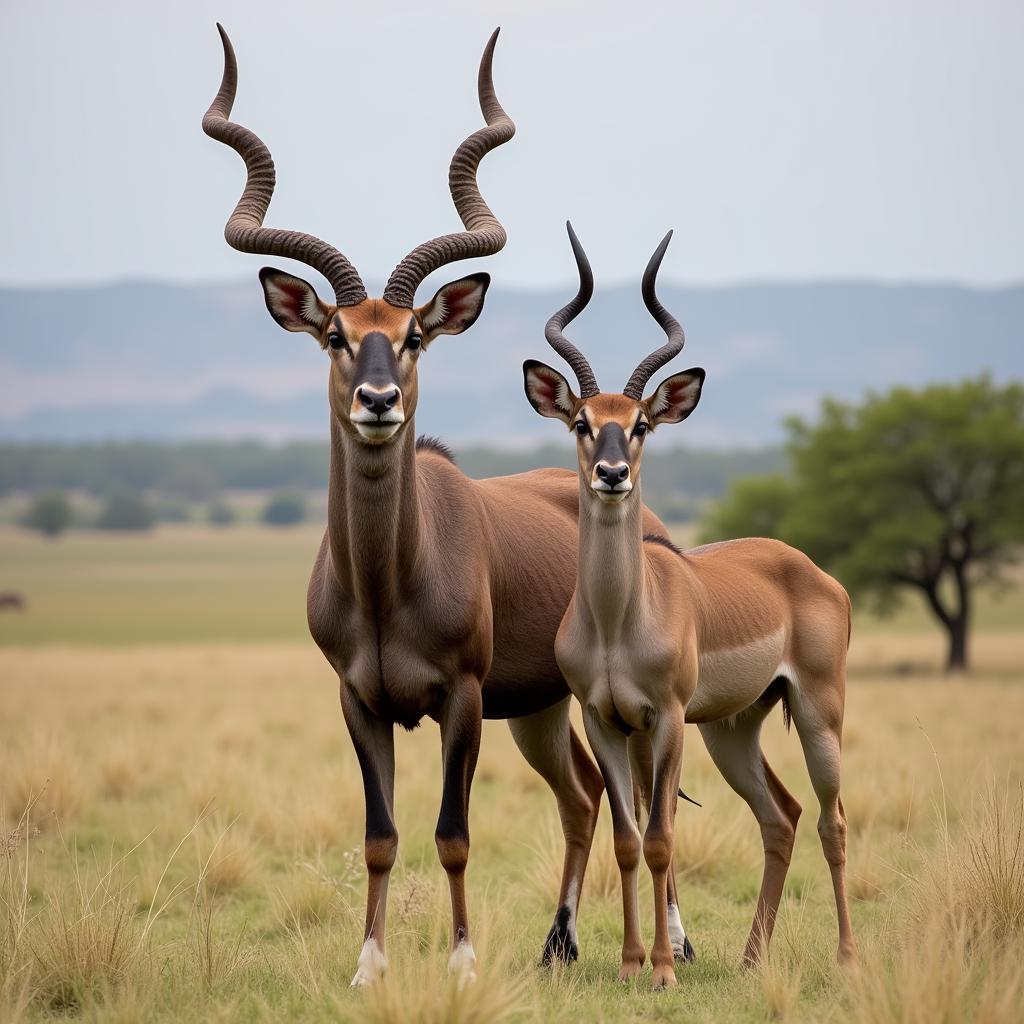Exploring the Diversity of African Giraffe Species
African Giraffe Species are iconic symbols of the African savanna. These majestic creatures, known for their towering height and unique patterned coats, are more diverse than many realize. This article delves into the fascinating world of giraffes, exploring their different species, their habitats, and the challenges they face in the wild. Let’s embark on a journey to discover the wonders of these gentle giants.
Unveiling the Secrets of African Giraffe Species
For many years, giraffes were generally considered a single species with several subspecies. However, recent genetic research has revealed a more complex picture, suggesting that there are actually four distinct african giraffe species. This discovery has significant implications for conservation efforts, as each species faces unique threats and requires tailored strategies for protection. Understanding the genetic differences between these species is crucial for ensuring their long-term survival.
The four recognized african giraffe species are the Northern giraffe (Giraffa camelopardalis), the Southern giraffe (Giraffa giraffa), the Masai giraffe (Giraffa tippelskirchi), and the Reticulated giraffe (Giraffa reticulata). Each species boasts distinctive coat patterns and occupies a specific geographical range across the African continent. For example, the Reticulated giraffe, with its bold, polygonal markings, is found primarily in northern Kenya, while the Masai giraffe, characterized by its jagged, leaf-like spots, inhabits southern Kenya and Tanzania. This geographical separation has played a key role in the genetic divergence of these remarkable animals.
What are the Different Types of African Giraffes?
Each african giraffe species exhibits unique characteristics, not just in their coat patterns, but also in their physical attributes and behavioral traits. Northern giraffes tend to have lighter coats with paler spots, while Southern giraffes display darker, more irregular markings. Masai giraffes are known for their dark, jagged patches, and Reticulated giraffes for their intricate, net-like patterns. These variations in appearance highlight the remarkable diversity within the giraffe family. African herbivores like giraffes play a crucial role in the ecosystem.
Where do African Giraffes Live?
African giraffe species are found across a range of habitats, from the savannas and woodlands of East Africa to the more arid regions of Southern Africa. They are adapted to survive in diverse environments, demonstrating remarkable resilience in the face of varying climatic conditions. Understanding their habitat preferences is essential for implementing effective conservation strategies. For instance, Nairobi, the capital of Kenya, is a vibrant hub for wildlife conservation, playing a significant role in protecting these majestic animals. Check out more about the African country whose capital is Nairobi.
Are Giraffes Endangered?
Sadly, african giraffe species are facing increasing threats due to habitat loss, poaching, and human-wildlife conflict. The IUCN Red List classifies some giraffe species as vulnerable or endangered, highlighting the urgent need for conservation action. Efforts to protect these magnificent animals include establishing protected areas, combating poaching, and promoting sustainable land management practices.
Conserving African Giraffe Species: A Collaborative Effort
Protecting african giraffe species requires a collaborative approach involving governments, conservation organizations, local communities, and individuals. By working together, we can ensure that these gentle giants continue to roam the African savanna for generations to come. Supporting sustainable tourism initiatives and educating the public about the importance of giraffe conservation are vital steps in safeguarding their future. Have you seen African 3D archery targets?
Conclusion
African giraffe species represent a remarkable example of biodiversity on the African continent. From their unique coat patterns to their varied habitats, these majestic creatures captivate our imagination and remind us of the importance of preserving the natural world. By understanding the challenges they face and supporting conservation efforts, we can contribute to the long-term survival of these gentle giants.
FAQ
- How many species of giraffes are there in Africa? There are four recognized species of giraffes in Africa.
- What is the tallest giraffe species? The Northern giraffe is generally considered the tallest giraffe species.
- What do giraffes eat? Giraffes are herbivores and primarily feed on leaves, buds, and fruits of trees, particularly acacia trees.
- Where can I see giraffes in the wild? Giraffes can be seen in various national parks and reserves across Africa, including Kenya, Tanzania, and South Africa.
- How can I help protect giraffes? You can support giraffe conservation by donating to reputable organizations, spreading awareness about their plight, and choosing sustainable tourism options.
- What is the difference between a Masai giraffe and a Reticulated giraffe? Masai giraffes have jagged, leaf-like spots, while Reticulated giraffes have bold, polygonal markings.
- Are all giraffe species endangered? While not all giraffe species are currently classified as endangered, some are considered vulnerable and face significant threats. You can read more about the African Eagle in Mbabane, Swaziland, and other African Gemie.
Other Questions to Explore
- What are the specific conservation challenges faced by each giraffe species?
- How does climate change impact giraffe populations?
- What research is being conducted to better understand giraffe genetics and behavior?
Further Reading
Consider exploring articles on other African wildlife, such as African herbivores.
Need Help?
For assistance, please contact us at Phone Number: +255768904061, Email: kaka.mag@gmail.com or visit our office at Mbarali DC Mawindi, Kangaga, Tanzania. We have a 24/7 customer support team ready to assist you.

